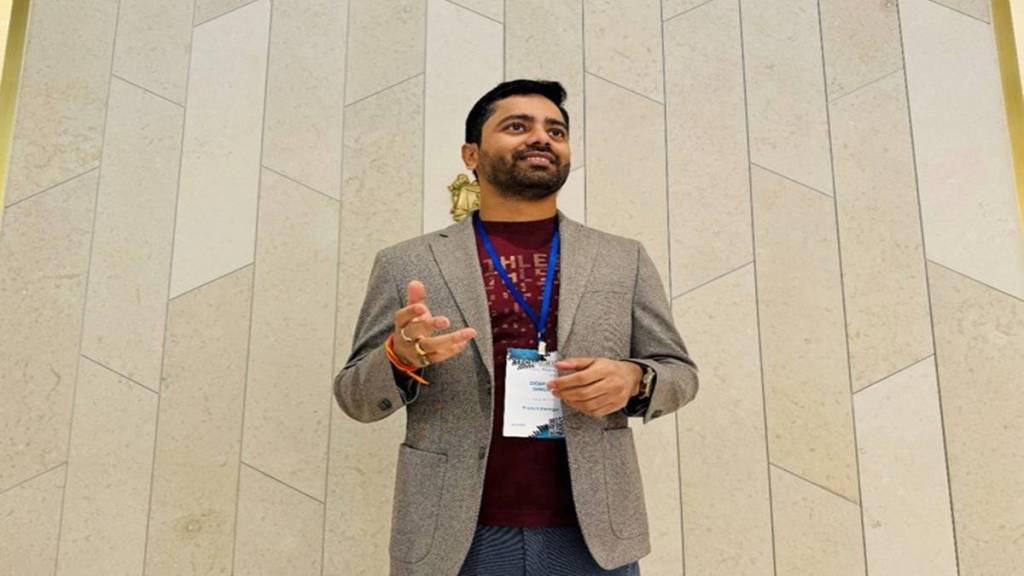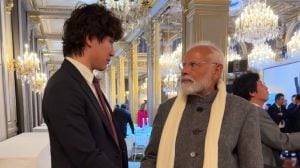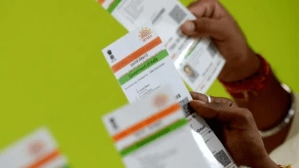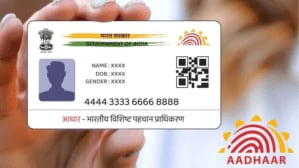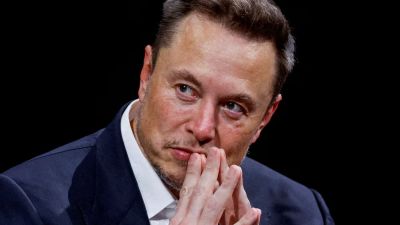In the dynamic sphere of healthcare, telehealth stands as a pivotal innovation, reshaping the way medical services are delivered across the globe. This technology, transcending geographical barriers, brings a new era of accessibility and efficiency to healthcare. It’s not just a trend but a necessity, especially in remote and underserved regions where traditional healthcare is often challenging. Telehealth’s rise is fueled by its potential to drastically reduce response times in emergencies, enhance educational resources in isolated areas, and offer sustainable, cost-effective solutions for healthcare systems worldwide.
Amidst this transformative wave, Deepak Singh’s name resonates with particular. The above photo is from a healthcare conference in San Francisco, CA where he delivered an inspirational talk on how telecom can revolutionize telehealth and shared a brief about his latest patent-pending technology that he has refined with some collaborators. This talk inspired us to learn more about his journey, work and social entrepreneurship, and mentorship activities. Known for his practical and impactful research, he stands as a beacon of innovation in an industry ripe for change
A Journey of Innovation and Impact
Deepak Singh’s professional journey began during his tenure at a major telecom firm, where he developed technology for video calls in low-signal areas. This initial foray laid the groundwork for what would become a transformative invention in telehealth. His latest patent (pending) presents an enhanced version of this technology, now adapted for use in remote and disaster-prone regions. This novel work is not just a technological breakthrough but a significant leap in making healthcare accessible to the most vulnerable populations.
The implications of Singh’s work are far-reaching. Major healthcare and insurance companies have consulted with him, recognizing the potential of his innovations to revolutionize their operations. The technology’s adaptability has shown promise in various sectors of healthcare, with potential impacts measurable in tangible numbers in India, UAE, USA, possibly Australia, and many other parts of the world through the Samsung smartphones that have this tech inbuilt. For instance, in telemedicine implementations, response times during emergencies have been significantly reduced, saving hundreds of lives annually. Financially, telehealth technologies like Singh’s could cut healthcare expenses by up to 30%, offering a sustainable solution for economically developing regions like Kenya, Egypt, and South Africa.
A Blend of Practical Research and Industry Expertise
What sets Deepak Singh apart is his unique research approach. Unlike many in the field, Singh focuses on practical, industry-applicable research. His extensive experience as an industry expert has equipped him with the skills to develop technologies that are not just theoretical but immediately implementable. This practical orientation is evident in his award-winning inventions and patent-pending technology. His willingness to share knowledge through mentorship, peer reviews, and serving as a jury for multiple awards and competitions already indicates how he has reached this pinnacle in the telehealth domain.
Transforming Rural Healthcare
Singh’s telehealth pilot project in rural India is a testament to his vision. It is implemented on a population of ~17,000 population group of villages in the remote area of Bihar. He has used low-cost mobile phones from Samsung along with basic education to use smartphones (at least one person in the household). Getting 40 doctors on call can cover the population. He has also set up a common virtual clinic setup where people can physically go if they do not have a phone or find difficulty in using it. Recognized by the government of Bihar and covered extensively in the press, this project is a precursor to his plans to implement similar technologies in the United States if the rules and regulations allow. In a talk at a conference in San Francisco, CA (above photo), Singh says “Vermont, being predominantly rural, is an ideal location for telehealth implementation. With 82.6% of its population in rural areas, the state represents a significant opportunity for telehealth to make a meaningful impact.
Moreover, even globally, healthcare accessibility remains uneven. In the United States, despite being a hub of medical advancements, disparities exist, particularly in rural areas. For instance, Alaska and Hawaii, with 55.5% and 28.5% of their populations in rural regions, respectively, represent the diversity in healthcare needs across the country. I will continue to research novel ways of bringing healthcare access to remote areas through telehealth and other healthcare technology in collaboration with other industry experts.”
A Global Perspective on Healthcare Challenges
Globally, the disparity in healthcare accessibility is stark. In the United States, healthcare spending reached about $4 trillion in 2020, nearly 18% of the GDP, yet disparities persist, especially in rural areas. In contrast, low and middle-income countries often spend less than $1,000 per capita on healthcare. These statistics highlight the urgent need for more efficient, accessible healthcare solutions like telehealth.
Telehealth, championed by innovators like Deepak Singh, is more than a technological advancement; it’s a humanitarian effort to democratize healthcare. By integrating telehealth, nations can potentially reduce healthcare costs significantly, making medical care more affordable and accessible. This shift isn’t just a matter of convenience; it’s a necessity for a more inclusive and efficient global healthcare system.
